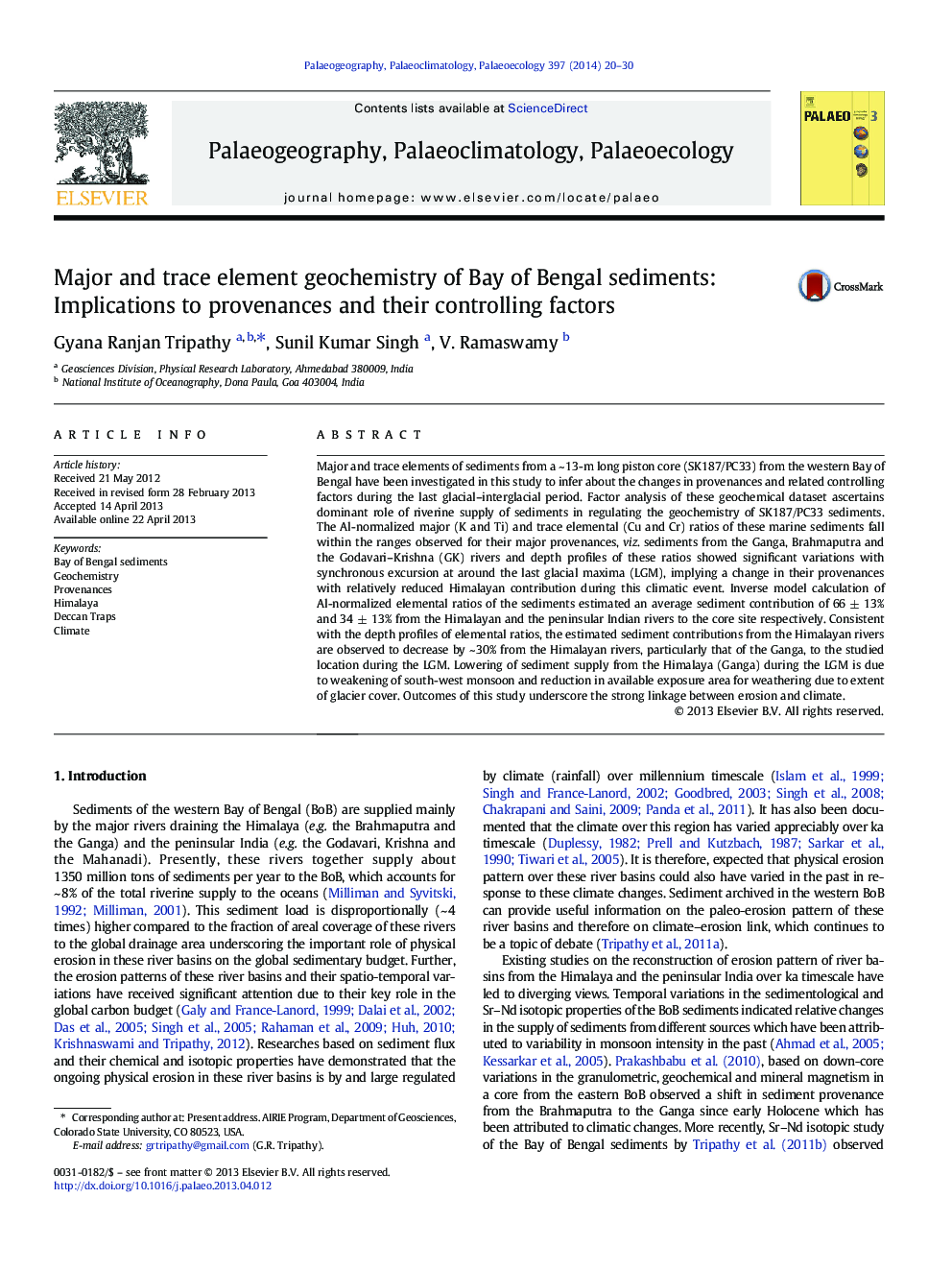| کد مقاله | کد نشریه | سال انتشار | مقاله انگلیسی | نسخه تمام متن |
|---|---|---|---|---|
| 4466356 | 1622193 | 2014 | 11 صفحه PDF | دانلود رایگان |
• Tracking provenances of Bay of Bengal sediment in the past using their geochemistry
• Geochemistry of BoB sediments is mainly controlled by their terrigenous sources.
• Inverse modeling of data shows lower sediment supply from the Himalaya during LGM.
• This change in sources is due to weakening of SW monsoon and larger glacial extent.
• This study underscores the strong link between climate and Himalayan erosion.
Major and trace elements of sediments from a ~ 13-m long piston core (SK187/PC33) from the western Bay of Bengal have been investigated in this study to infer about the changes in provenances and related controlling factors during the last glacial–interglacial period. Factor analysis of these geochemical dataset ascertains dominant role of riverine supply of sediments in regulating the geochemistry of SK187/PC33 sediments. The Al-normalized major (K and Ti) and trace elemental (Cu and Cr) ratios of these marine sediments fall within the ranges observed for their major provenances, viz. sediments from the Ganga, Brahmaputra and the Godavari–Krishna (GK) rivers and depth profiles of these ratios showed significant variations with synchronous excursion at around the last glacial maxima (LGM), implying a change in their provenances with relatively reduced Himalayan contribution during this climatic event. Inverse model calculation of Al-normalized elemental ratios of the sediments estimated an average sediment contribution of 66 ± 13% and 34 ± 13% from the Himalayan and the peninsular Indian rivers to the core site respectively. Consistent with the depth profiles of elemental ratios, the estimated sediment contributions from the Himalayan rivers are observed to decrease by ~ 30% from the Himalayan rivers, particularly that of the Ganga, to the studied location during the LGM. Lowering of sediment supply from the Himalaya (Ganga) during the LGM is due to weakening of south-west monsoon and reduction in available exposure area for weathering due to extent of glacier cover. Outcomes of this study underscore the strong linkage between erosion and climate.
Journal: Palaeogeography, Palaeoclimatology, Palaeoecology - Volume 397, 1 March 2014, Pages 20–30
